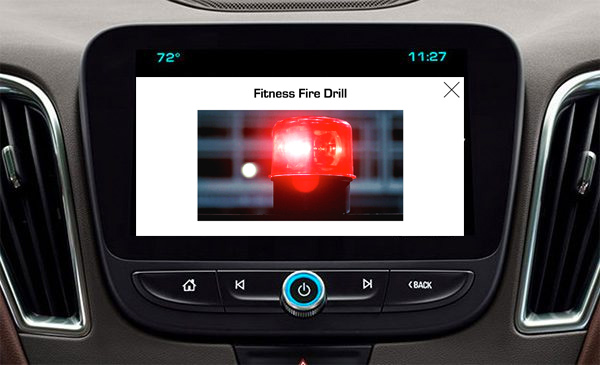This is one of a series of articles leading up to the 10th annual Startup Busevent, which takes place from Wednesday, July 24 though Sunday, July 28th. I’ll be on the Florida Startup Bus, where I’ll be a hustler with a group that will spend three days on a bus, building a software, a business model, and a pitch, all of which we’ll present before a panel of judges in New Orleans! I hope these articles convince people to join Startup Bus, inspire the “Buspreneurs” who will be participating, and get the rest of you to find out more.
The Startup Buses depart tomorrow! I’m going to be on the Florida bus, which departs from Tampa and after taking a not-very-direct route, arrives in New Orleans on Friday, with the judging happening on Saturday. Here are the last of my pre-event notes on Startup Bus — watch this space as I post from the road!
The lesson from my last hackathon
Click the photo to see the original article.
My big lesson from my win at “Makers Hustle Harder” hackathon in March 2017: Simple and working beats complex and non-functional.
In 2017, GM (yes, the auto manufacturer) held “Makers Hustle Harder” hackathons in a handful of cities to see what people could build on their NGI in-car console systems. They held one of them in Tampa, and I offered to help a friend work on his app idea. I did that for most of the day, and with a couple of hours left, I came up with a goofy idea that I could whip up in very little time.
The app I put together was simple: it was a timer for the game classically known as the “Chinese Fire Drill”:
- Four people get in the car, close the doors, and someone starts the app.
- When everyone’s ready, someone in the front presses the app’s start button on the console touch screen.
- If any of the doors are open when the start button is pressed, the players will be told to close all the doors first (the game makes use of the car’s door sensors).
- If all the doors are closed when the start button is pressed, the game begins.
- Players exit the car, run around it once, return to their original seat, and close their doors.
- The game ends when all four doors are closed, at which point the time it took them to complete the drill is displayed.
The app wasn’t pretty, but that’s not what hackathons are about — they’re about working code in the time allotted. If you’d like to see the code, I’ve put it in a repo on my GitHub account.
An hour later, I had working code, an available vehicle, three other people to playtest the game with me, and two camera operators to record video of a test runs. We played the game twice, and we were giggling all the time. In the end, I won the “Judges’ Fetish” prize!
That lesson again: simple and working beats complex and non-functional.
Should non-coders join Startup Bus?
Yes, and if you don’t believe me, these links might help convince you:
- Harvard Business Review: Hackathons Aren’t Just for Coders
- Code Like a Girl: Hackathons: Coding optional, courage required.
- Cornell Tech: Hackathons Aren’t Just For Coders Anymore
- The C0de L1fe: Hackathons aren’t just for developers
- 18F: Hackathons: not just for folks who code
- Bringing the Hackathon Experience to the Non-Coder
- AT&T Developer Program: 5 Hackathon Roles That Have Nothing to Do with Coding
- Quora: How can a non-tech person participate in a hackathon?
How to brainstorm
A key part of hackathons is brainstorming. You may find these links helpful.
- Scott Berkun: How to run a brainstorming meeting and In defense of brainstorming
- Forbes: 4 Steps to Successful Brainstorming
- Zapier blog: Better Brainstorming: The Most Effective Ways to Generate More Ideas
- Fast Company: How to brainstorm like a Googler
- Hubspot blog: 15 Creative Exercises That Are Better Than Brainstorming
- BDC Canada: How to organize a successful brainstorming session
- UX Collective: Three Brainstorming Techniques for Designers
- Inc.: Here’s How to Be a Master of Brainstorming

